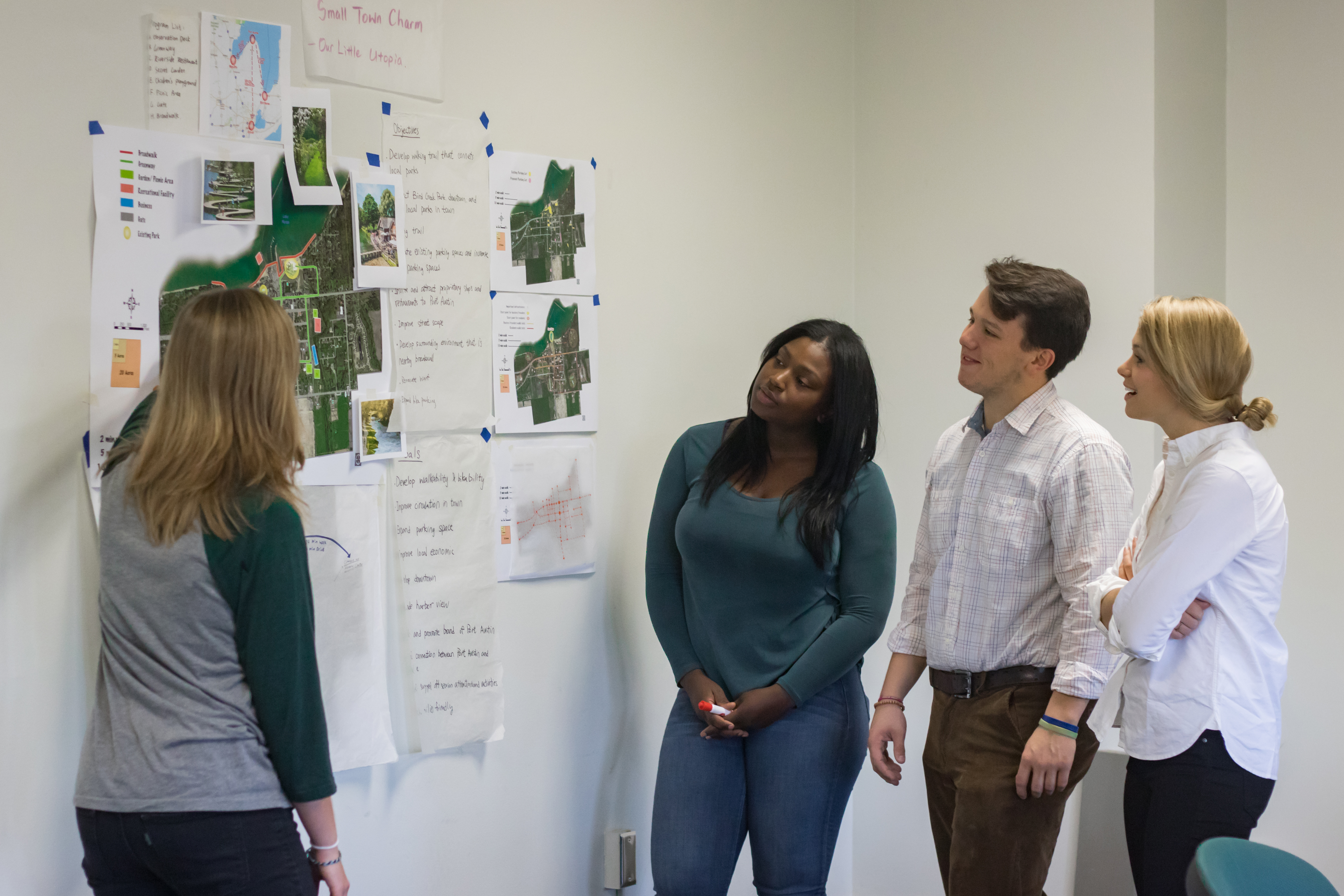Urban and Regional Planning (B.S.)
The Urban and Regional Planning major develops skills in community economic development, environmental stewardship and sustainability, and planning for transportation, health, housing, and real estate in a global context.
This program has a Strategic Plan. This degree has been accredited by the Planning Accreditation Board since 1987.
The program offers both an accredited five-year Dual Bachelor of Science in Urban and Regional Planning (BSURP)/Master of Urban and Regional Planning (MURP) degree (Fast-Track Option), and an accredited BSURP degree.

Core areas of study include:
- UP120: Digital Graphic Comm./Design.
- UP201: Introduction to Urban and Regional Planning.
- UP314: Methods for Investigation of Urban Systems.
- UP353: Land Use Planning.
- UP365: Planning Law and Ethics.
- UP424: Geographic Information Systems and Design Tools for Planning.
- UP433: Introduction to Environmental Planning.
- UP454: Local Economic Planning.
- UP494: Planning Practicum (capstone).
Learn more about requirements and courses in Urban and Regional Planning, as well as other admissions and course sequencing information.
Apply to Michigan State University
This program is designed to prepare students to assume the responsibilities encountered in entry-level professional planning practice. Extra effort is made to incorporate practitioner lectures or community projects to reinforce the curricula and adequately prepare students for the workforce.
Undergraduate students complete planning courses that give a basic understanding of the history of urbanism, the theory and principles of urban design, and the relevant legal and administrative procedures. Students graduate with a solid understanding of the techniques of survey and research used in the analysis of the structure and growth of urban areas. They are taught written and graphic communication.
The Bachelor of Science degree in Urban and Regional Planning integrates knowledge, skills, values and ethics to educate our future generation of planners in a comprehensive manner. Electives provide further strengthening of core areas through application, as well as integration with the program, goals and mission. This program offers several specializations and a curriculum targeted to best suit students’ educational goals, all of which adhere to the overall program mission in creating sustainable built environments.
Please visit the SPDC’s Student Services page for advising and internship information. For average costs for tuition, housing, financial aid and more, visit Tuition Cost and Aid.
For more information about planning or planning resources, visit the Michigan Association of Planning.
Urban and Regional Planning Graduates
See career outcomes for MSU urban and regional planning graduates, including salaries, top employers and employment locations.
Career Opportunities
- Planning departments and agencies.
- Community development organizations.
- Housing and real estate firms.
- Environmental planning.
- Policy making.
- Consulting.
Professional Development
Students complete a required capstone “practicum” course in their last semester of study. This intensive course is designed for the students to utilize their knowledge and skills by working with local communities on real life planning projects. They are also encouraged to pursue internships during their time of study.
Students also develop technical skills in GIS research methods and data analysis for cities, regions and communities.
Faculty members and advisors maintain close relationships with urban and regional planning companies, which can help with internships, scholarships and employment in this industry.



 Print
Print Email
Email